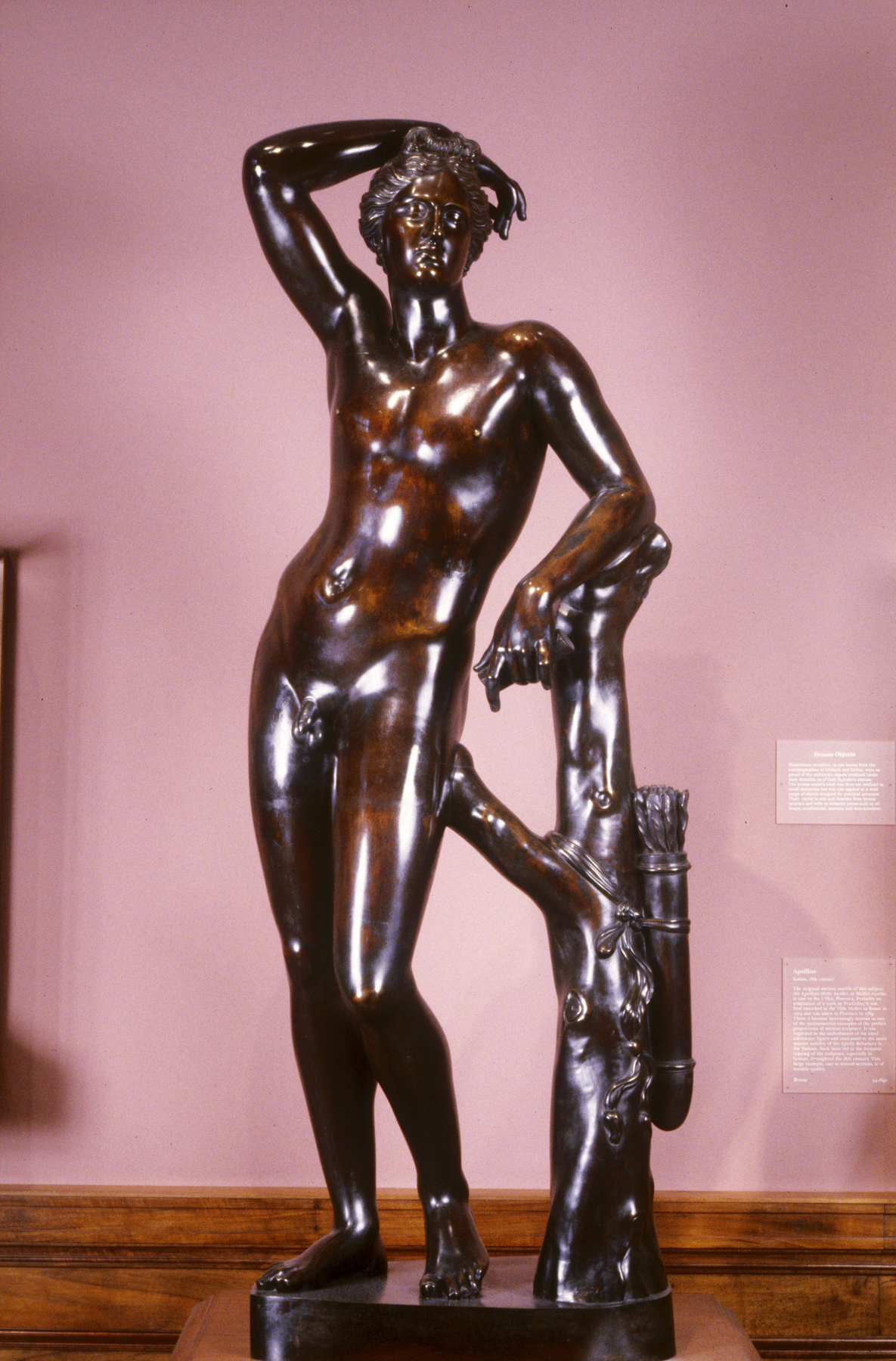Apollino
(Baroque Europe )
The original ancient marble statue, depicting the Greco-Roman sun god, is called the Apollino (little Apollo) or Medici Apollo, and is now in the Uffizi Museum in Florence. Probably an adaptation of a work by the famed Greek sculptor Praxiteles, it was first recorded as being in the Villa Medici in Rome in 1704 and was taken to Florence in 1769.
Due to its fame, this statue was frequently copied throughout the 18th century, especially in bronze. It was known as one of the prime examples depicting the perfect proportions of the human body.
Provenance
Provenance (from the French provenir, 'to come from/forth') is the chronology of the ownership, custody, or location of a historical object.
Jacques Seligmann [date and mode of acquisition unknown]; Henry Walters, Baltimore, 1904, by purchase [Emil Rey as agent]; Walters Art Museum, 1931, by bequest.
Geographies
Italy (Place of Origin)
Measurements
H: 59 1/2 in. (151.2 cm)
Credit Line
Acquired by Henry Walters, 1904
Location in Museum
Not on view
Accession Number
In libraries, galleries, museums, and archives, an accession number is a unique identifier assigned to each object in the collection.
In libraries, galleries, museums, and archives, an accession number is a unique identifier assigned to each object in the collection.
54.1691


